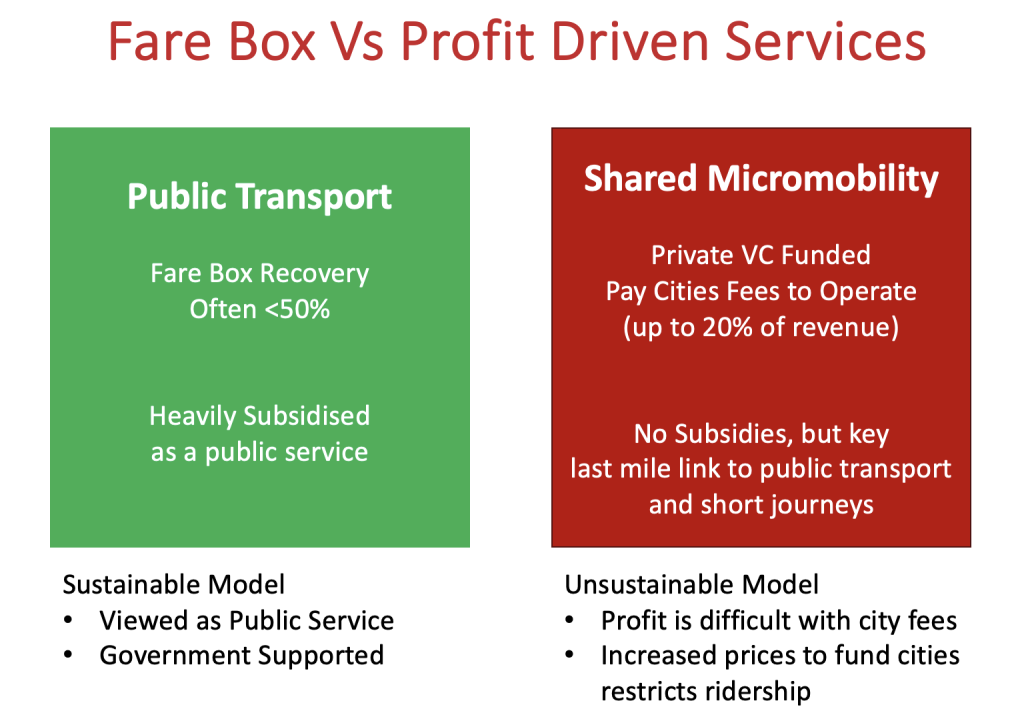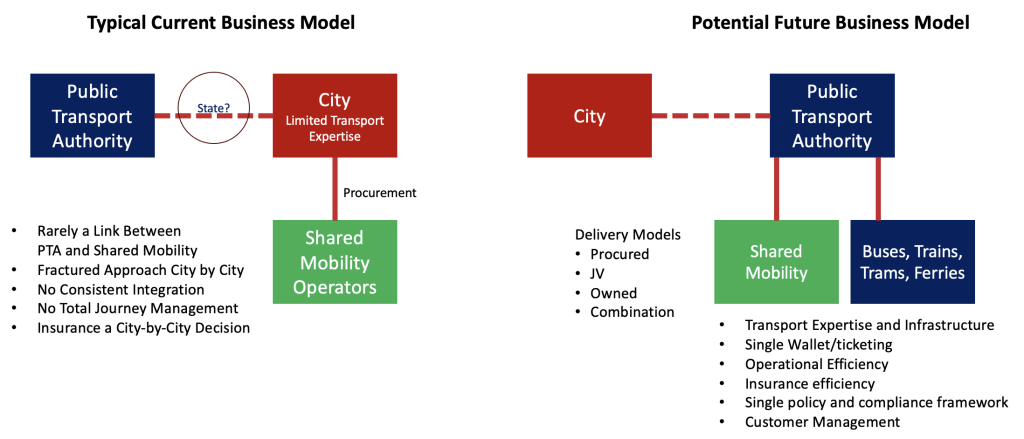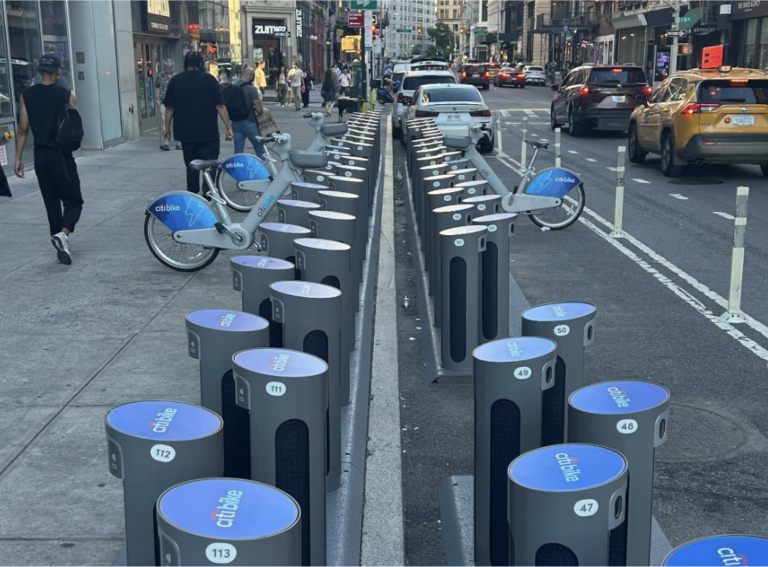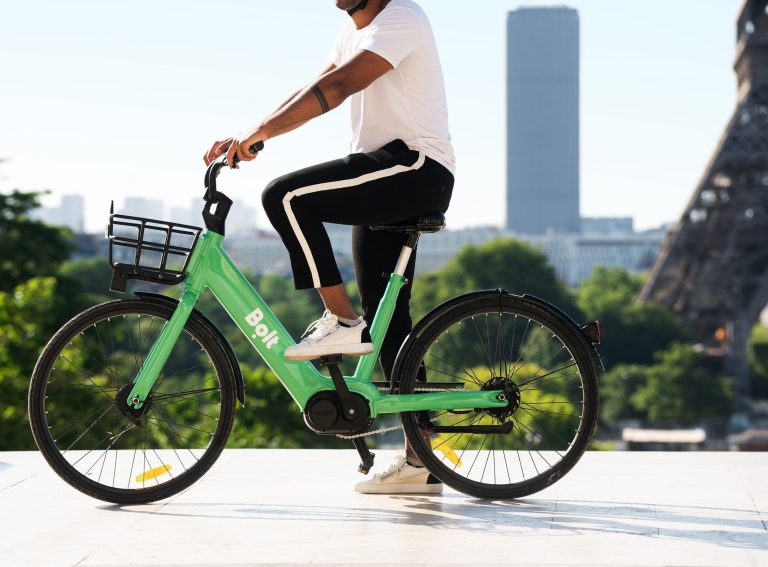Author: Stephen Coulter, Founder, Zipidi
Shared mobility, especially through electric scooters, has experienced explosive growth driven by venture capital and city initiatives. However, the financial models underpinning these ventures are proving to be flawed, leading to a concerning range of unsustainable practices.
The financial strain on micromobility operators
Initially, startups secured city tenders with financially impractical offers, with some backed by venture capitalists. As Rikesh Shah notes in Zag Daily, cities have come to expect operators to cover costs and more, assuming a seemingly limitless pool of financial backing.
“There appears to be a strong perception from cities that operators – some of which are backed by venture capitalists – are rich in financial backing, so it’s up to them to cover costs and more when it comes to delivering micromobility in cities. But as the economic landscape has evolved, and the focus to achieve profitability has accelerated, there appears to be a risk that this is no longer sustainable.”
The reality is different; operators struggle to turn a profit, resulting in the withdrawal of services from smaller cities. The consequences are twofold: cities lose a valuable first/last mile transportation service, and operators find themselves trapped in a financially unsustainable cycle.
Venture capitalists, once prolific funders, are now tightening their purse strings. Funding release is contingent on achieving key business milestones, prompting operators to be more discerning in city selection and less aggressive in financial commitments. This shift towards profitability-driven funding aims to create more sustainable operators, but it risks leaving smaller cities isolated where scale isn’t economically viable.
Public transport models vs shared micromobility
Governments have historically subsidised public transport, recognising its value as an affordable, accessible mode of transportation. The farebox recovery ratio for public transport is often less than 50%, emphasising the need for subsidies to maintain affordability.
Micromobility, a crucial first/mile link to public transport, operates outside traditional systems, requiring operators to pay cities for the privilege of providing transport services. This fee-driven approach contradicts the goal of offering affordable first/last mile transportation.

The Challenge of Integrating Micromobility into Public Transport
Efforts to integrate shared micromobility into public transport often fall short of achieving efficiency in costs and user pricing. The current pricing structures, based on fees to cities and profit expectations for venture capitalists, create a high-cost structure that limits cost-effectiveness.
A Case Study: The Brisbane Trial
A trial in Brisbane involving public transport and micromobility operators Beam and Neuron highlights the challenges. The pricing options, while innovative, position shared micromobility as a premium service rather than an integrated part of public transport. This approach may hinder widespread adoption due to relatively high costs.
A standard full-fare monthly public transport ticket, not including shared micromobility, is AUD$125. The trial Odin Pass has options to add shared micromobility from either Neuron, Beam or both:
● Public transport + Neuron only $165 ($103 for students)
● Public Transport + Beam only $186 ($103 for students)
● Public Transport + Beam & Neuron $215 ($129 for students)
● Neuron allows up to 90 minutes of rides per day, while Beam allows 120 minutes per day. The Odin pass can also be used for cabs and car sharing on a pay-as-you-go basis.
Toward a future pricing model
Riders do not want to pay for transport services they will not always use. As more people are working from home and on different work timetables, a fixed charge, whether used or not, is not always effective. To address evolving transportation needs, a potential future model should consider:
● A single user profile for any mode of transport with any operator
● A unified wallet for funding all transportation services
● Pay-as-you-go pricing on a door-to-door basis
● Weekly or monthly caps to ensure predictability for regular users
Damian Brown of Trafi discussed this style of pricing with Zag Daily on November 8, 2023.
A new paradigm for shared micromobility
Zipidi proposes a paradigm shift, suggesting that public transport authorities are better positioned to be the lead partner with shared mobility operators than cities. Leveraging existing transport expertise, infrastructure, and operational efficiencies, public transport authorities can provide a more sustainable framework for micromobility services. This model could potentially reduce capital and operational costs for operators and open avenues for government subsidies through public transport authorities.

The current trajectory of shared mobility business models raises concerns about sustainability. As the industry navigates these challenges, a shift towards profitability-driven funding, integrated public transport solutions, and innovative pricing models could pave the way for a more sustainable and inclusive future in shared mobility. Collaborative efforts between public transport authorities, cities, and operators will be essential in steering the course towards a balanced and effective shared mobility ecosystem.











